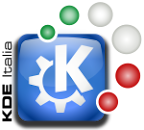Some days ago i was told by a friend of mine if i knew a photo management application able to handle geographical informations INSIDE the picture files. At a first moment i laugh because of the easy answer: digiKam, obvious. Other software he found tends to match the image files to a database, and if you send/share your pictures you will lose all meta-data information...
After a second i laugh less because i recalled that he has a Mac.
MacBook Pro with Leopard inside to be more precise. And it was nearly the first time i saw a mac. So how to get digiKam there? I know KDE4 is multiplatform now thanks also to the Qt4 framework so i tried first on mac.kde.org, but nothing, then whit macports, but didn't find nothing. So said, after a couple of hours investigating around, and asking for hints on #digiKam and #KDE44-mac (irc channels on the freenode.org server) i ended up with an idea on how to obtain digiKam on my Friend's mac.
I started installing xcode, the basis for every development on mac. It comes with gcc, make and other useful stuff. Then i installed all the dependencies of KDE4 i found, being able to install even kdebase4 (4.1.85, not so old!) via macports. From here onwards i had to compile everything needed:
KDE44graphics (you NEED latest versions of libkdcraw and libkexif)
libgphoto2 (the one on the macports's server was too old)
not much, really. In a Linux environments it is a matter of ~20 minutes or so. But in a brand new environment (for me) it is like you are taken by someone, blindfolded, taken to another city and told to go back home by your own.
The problem (but it's now a big advantage) is that i had to learn how macports works and then i created a local repository with one folder for every package, created a Portfile for everyone and started the build. It was nothing but straightforward. It took the entire day (next the day i received the mac, so we are on day 2) and landed with kipi-plugin compiled around midnight...
Next step was digiKam. Once i got kipi-plugins compiled i was quite confident (i had to hard-remove imageviewer, dng, and slideshow plugin that were blocking the builds) that i was at a little step to the success. But i was wrong. Another couple of hours separated me from getting digiKam on that mac because of another problem during compilation: the theme designer broke it and i had to delete any reference of id in the CMakeList.txt file (the same i did with kipi's plugins).
But it can't rain forever:

I had to do some trick to get it to build, so it is not that kind of stuff you can write an how-to on. I just hope to be able to adjust the macports's file on that system (witch i have to lend again) and produce some dmgs.
The important thing for me is to attract the attentions of a "real" packager to get a useful, easy and update, digiKam package for all the Mac users out there!

